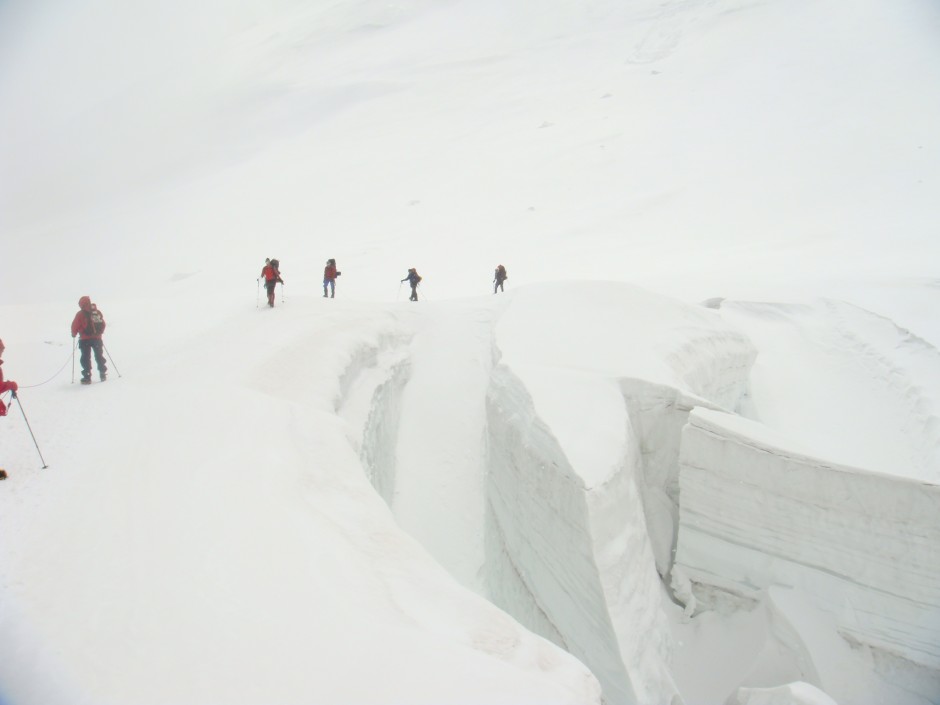
‘Ice crevasse’ by Zervas Efthimios, distributed by EGU under a Creative Commons license
Glaciers are persistent bodies of ice at least 100,000 square metres in area and 50 metres thick. They are mostly found in the polar regions but also in mountain ranges, and represent the largest reservoir of freshwater on Earth.
This photo was taken by Zervas Efthimios in August 2009, on the climb towards Lenin Peak in the Pamir mountains, Central Asia. “This crevasse appeared just before the second advanced camp at 5500 metres during a mountaineering expedition. For mountaineering purposes, hidden crevasses – which appear more often in areas where glaciers are shrinking – can be very dangerous and always present a lethal risk to human life. An additional danger is when ice blocks move, an event that can also lead to fatal accidents. In areas where glaciers are smaller, and many are currently shrinking, spots not covered with ice are both hard and dangerous, making them difficult to navigate. Shrinking glaciers are a global problem and, on a global level, contribute to desertification,” Efthimios comments.
Glaciers worldwide are shrinking as a result of climate change, raising global sea levels and threatening low-lying inhabited areas. Melting glaciers have been connect to desertification in regions such as central Asia and South America.
Imaggeo is the online open access geosciences image repository of the European Geosciences Union. Every geoscientist who is an amateur photographer (but also other people) can submit their images to this repository. Being open access, it can be used by scientists for their presentations or publications as well as by the press. If you submit your images to imaggeo, you retain full rights of use, since they are licenced and distributed by EGU under a Creative Commons licence.
